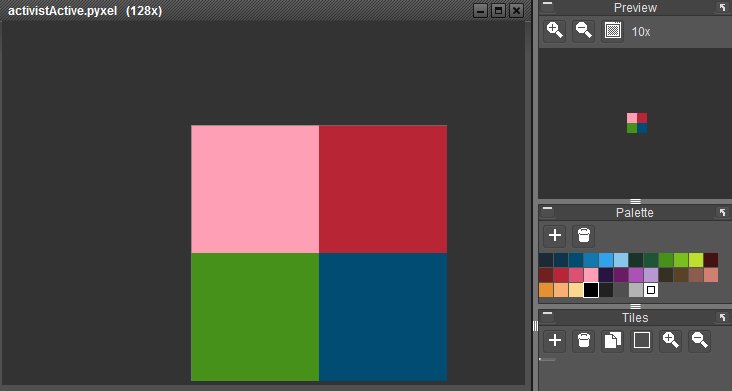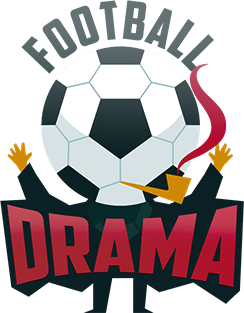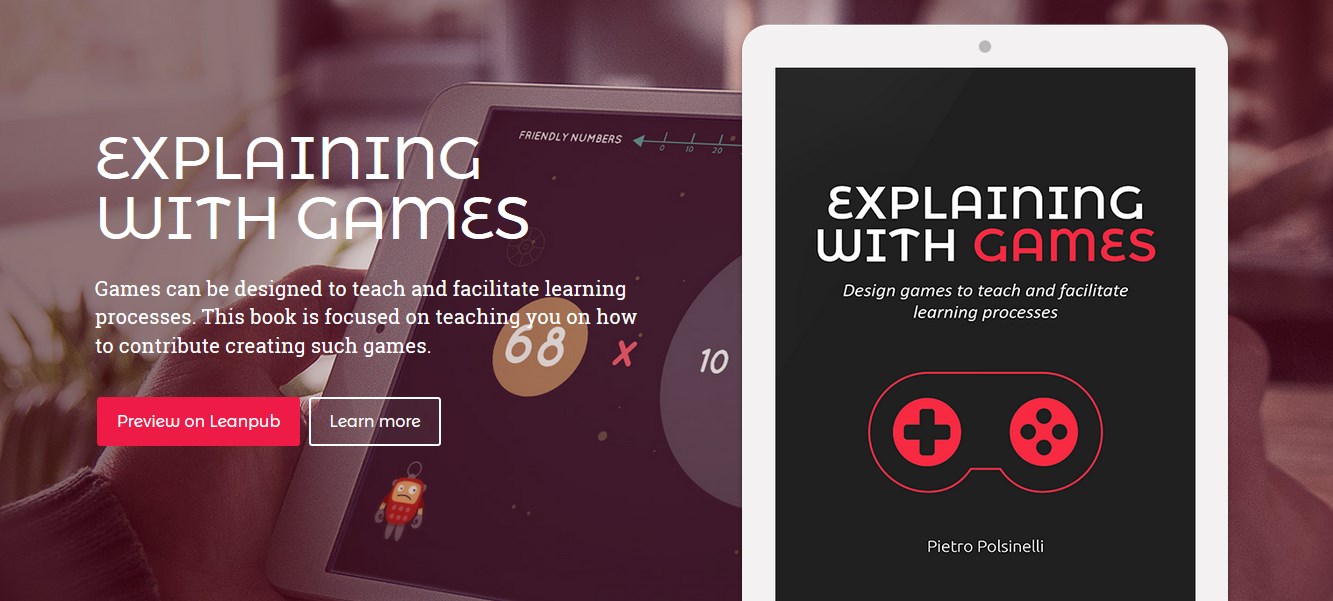Let me talk a bit how I started developing the idea and the following design of Tonzilla, my first serious game that will be published this fall.
Goals
I had two goals in mind:
my first goal was that I wanted people to express themselves more and better.
Simple topic isn’t it? It can be translated in many ways, and I declined these lines:
- people need to not be shy
- people need to know their expression instruments
- they have to train on them
as color, I couldn’t develop anything that wasn’t fun to play, serious or difficult topics are easier to deal with if you have a minimal fun with them.
So… what’s our primal expression instrument? Our voice.
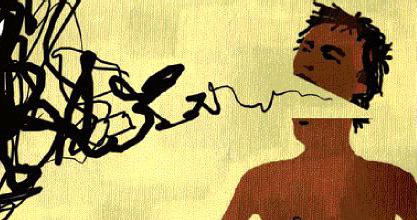
A game where we have to use our voice, and train it to liberate our expression engine, having some fun with it…
I started feeling something nice in this idea.
Since the consciousness and main behavior of a human being gets formed in the first 7 years since birth, it’s much better to start being free to express ourselves as young as possible.
So this game should be playable by kids.
An old guy can play a child game, but a kid usually doesn’t play an adult one.
(Later I then decided to dedicate mostly to K12.)
My second goal was that I wanted people to feel better the relationship between themselves and the outer world
So… what is our interface with the world? mostly our body.
We usually care about its health or its aspect, but what about its spatiality?
What if the player had a giant body? Should she care more about how she moves and touches things? What would be his POV (Point of View)?
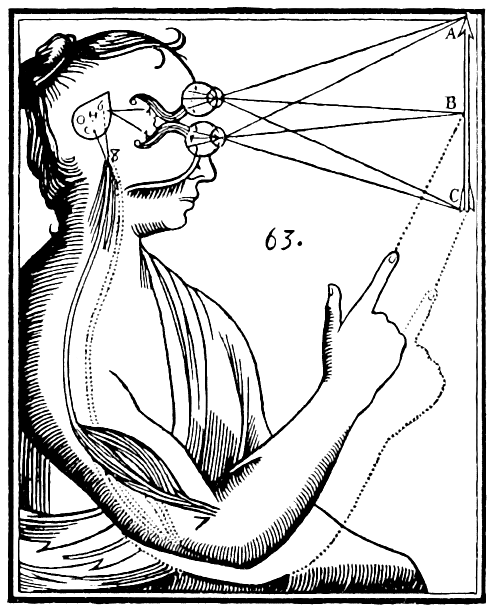
My Skills
So I had some ideas I wanted to put into my game.
But how to translate them into gameplay?
What should the player do in this game to start dealing with his voice and having a giant POV?
I asked myself: what skill & technology do i know/like?
I’m good with audio signals, I know musical theory, I have basic in 3D space and I think that Virtual Reality is such an interesting topic… uhm.
I also know what could be fun to do in a virtual world where you can use your voice freely.. I even have a 5yo son I play the piano and sing with…
Marketing Research
Let me search a moment around: how many published voice controlled games are there around? How many of them have Virtual Reality integration and have levels that help the player improve their vocality?
Very very few, maybe one (in the future!). It was a GO GO.
The Idea
Here was my idea: the player was a grown up giant in a big world, and the sounds emitted by his voice could interact with the objects around. Different kind of sounds, different effects.
Would be fun to destroy buildings with a scream, to blow away clouds, to levitate rocks with a hum, to generate beats with rhythmic sounds…

Wow.. nice!
Dressing this idea with things that could be easily picked by kids and everybody revealed that you could be a giant monster arriving in town and, like Godzilla teaches, you can destroy everything! This is was a very simple description of the game, and the marketing dept. approved.
Technology
Let me see if I really can achieve this game plan with the technology I know: I can develop with Unity, I know the basics of audio signals (FFT and spectrum analysis), I can create simple 3D worlds, I have Oculus.. yes it can be done.
But I want kids to play with it soon.. so I wanted to make both an Oculus Vr version, and a mobile tablet/smartphone one.
There weren’t technical obstacles (you know maybe sometimes you have an idea which is very difficult to be developed with current technologies)
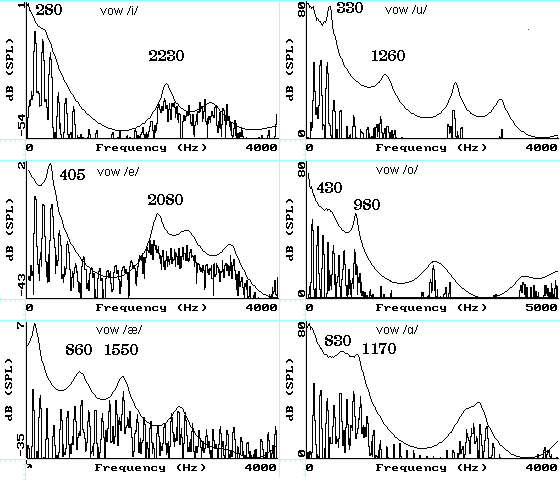
Final Steps
I’m not a good designer at all, so i needed a design partner. Luckily I found Emiliano Granatelli (TodaviaNo) who was an old friend, huge designer, and like me was just wanting to enter the gamedev world.
Working with him we got the title “Tonzilla” (it sounds very similar to Tonsil), with a VR^2 standing for Vocal Rampage and Virtual Reality
also the story of being a child reading a Godzilla comic sitting on the WC, and getting asleep you would them dream the gameplay.
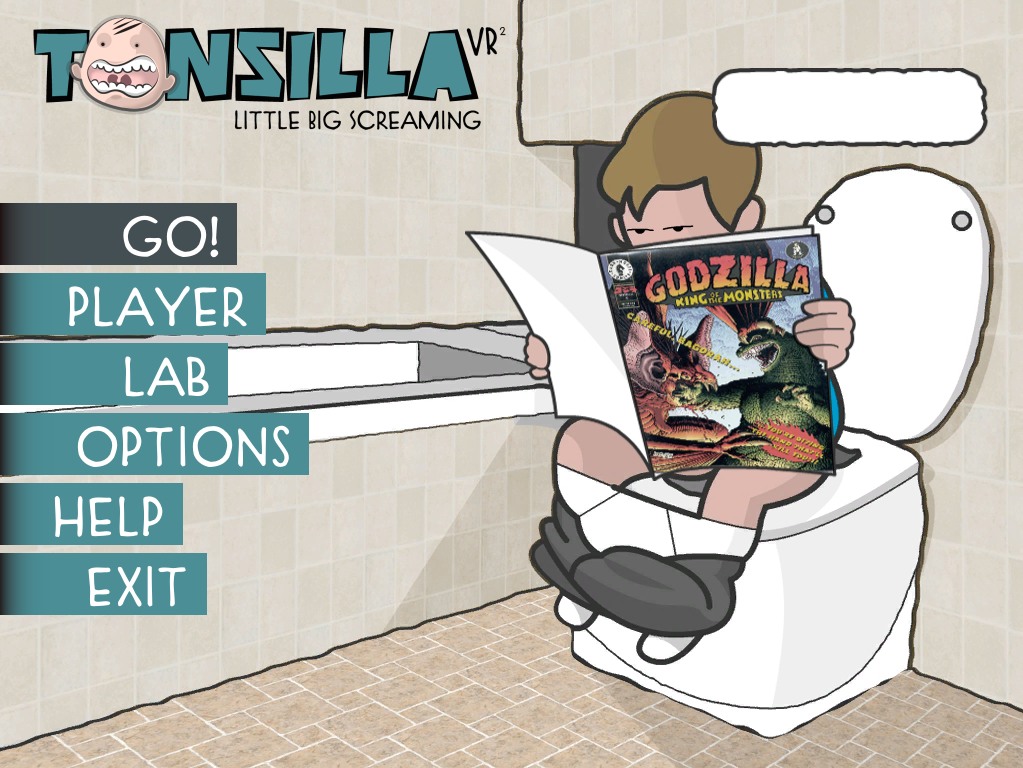
the graphic style was defined by trying to find a simple / low poly world with very nice looking.. old comics were in B&W, so why not to use that?
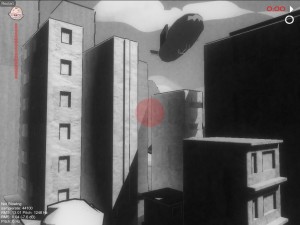
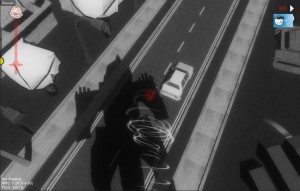
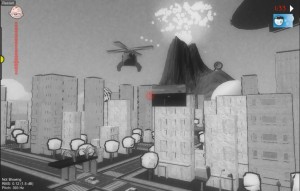
You’ll see the rest of the development, and the nice features we’re keeping secret until you’ll discover them in the game (no spoilers here 😉
Features and Levels
As prototyping started giving something real to play, keeping short iterative redesign many many new ideas came out: I can track pitch shifting, or recognize melodic patters, many interactive.. “destroyable” objects went into scene.. from cars, to helicopters, from giant radars to trains.
If you destroy a helicopter the pilot jumps out and parachutes, running away when on the ground.
Important: NOBODY GETS KILLED in this game.. humans flee (if scared). the player can interact or destroy quite everything.. but no live gets killed. It was my decision on nonviolence.
To start I wanted to design just one level, adding several different missions in the same environment (like: destroy all helicopters, roll the giant ball, push 10 buildings… turn on the Vulcano): one level, several mission, fast more fun.
Then we added the “blast lab”, because a giant doesn’t emit only sounds… many other things can be emitted.. but this is part of the surprise (which the player has to discover by himself)
Conclusion
I had never designed a full game, and this experience was (IS, I haven’t finished it!) very interesting: I could put into this project a lot of knowledge i collected and experienced in latest 20 years (from music to psychology, from programming to design, from marketing to symbolism and allegorics).
In next article I’ll talk about the first months of development! Stay tuned!
You can follow Tonzilla development at tonzilla.com or Twitter or Facebook.


 I could not get my 2 pixel by 2 activist demonstrating in the scene to collide with buildings when working in 2D. By using the 3D box collider and locking rotations everything worked fine, but it was not cool at all given the very flat design of
I could not get my 2 pixel by 2 activist demonstrating in the scene to collide with buildings when working in 2D. By using the 3D box collider and locking rotations everything worked fine, but it was not cool at all given the very flat design of 
